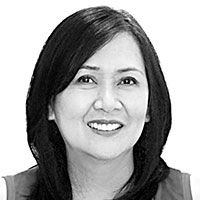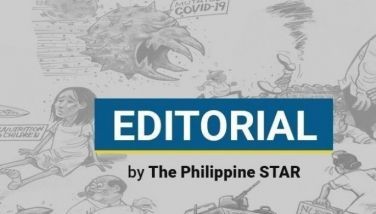Heroes

Bertolt Brecht once wrote, “Unhappy is the land that is in need of heroes.” Yesterday was National Heroes Day. And today we lay to rest DILG Secretary Jesse Robredo, one of the country’s finest leaders. Jesse walks into the annals of history as the gold standard of servant leadership.
But other than Jose Rizal, Andres Bonifacio and Ninoy Aquino who are honored in public holidays, I wonder if the youth know ten Filipino heroes and their profiles of courage.
Maybe if we strengthened our affinity with heroes, our self-identity as a race will be clearer. We have been labeled as domestics, artists, athletes, seamen and singers by foreign perceptions. But we have yet to quarry our essence as a people whose bloodline and DNA come from the bravest.
Most of these name are from the Herolist of park.org, a site that was put up for the Expo Centennial celebrations. The nation salutes the men and women in this honor roster. As Winston Churchill said, “Never in the field of human conflict was so much owed by so many to so few.”
1. Dr. Jose Rizal (1861-1896) — The National Hero. His incendiary masterpieces Noli Me Tangere and El Filibusterismo stirred hearts and consciences. His death by musketry on December 30, 1896 was the lynchpin for the revolution against Spain.
2. Andres Bonifacio (1863-1897) — The Great Plebian and Father of the Katipunan. He grew up in the slums and never tasted the prosperous life. He was killed on May 10, 1897, near Mount Buntis, Maragondon, Cavite.
3. General Gregorio del Pilar (1875-1899) — Hero of the Battle of Tirad Pass who enabled Aguinaldo to escape from the Americans. One of the youngest and bravest generals.
4. General Emilio Aguinaldo (1869-1964) — President of the First Philippine Republic. He officially proclaimed Philippine independence in Malolos, Bulacan, on January 23, 1899. He was the first president. He died at the Veterans Memorial Hospital, Quezon City, on February 6, 1964.
5. Apolinario Mabini (1864-1903) — Sublime Paralytic and Brains of the Revolution. He joined La Liga Filipina and Aguinaldo’s revolutionary government from 1898-1899. He was captured by the American forces in 1899 and deported to Guam in 1901.
6. GOMBURZA — Fathers Mariano Gomez (1799-1872), Jose Burgos (1837-1872), Jacinto Zamora (1835-1872); Three intellectuals who crusaded for reform. Killed by garrote in Bagumbayan on February 17,1872 for allegedly instigating the Cavite mutiny.
7. Trece Martirez (1875-1899) — 13 martyrs of Cavite, who were executed by a firing squad on September 12, 1896: 1) Maximo Inocencio; 2) Jose Lallana; 3) Eugenio Cabezas; 4) Maximo Gregorio; 5) Hugo Perez; 6) Severino Lapidario; 7) Alfonso de Ocampo; 8) Francisco Osorio; 9) Antonio de San Agustin; 10) Luis Aguado; 11) Agapito Conchu; 12) Victoriano Luciano; and 13) Feliciano Cabuco.
8. Emilio Jacinto (1875-1899) — Brains of the Katipunan. He joined in 1894 and was Bonifacio’s trusted friend and adviser. He wrote the Kartilya ng Katipunan, the primer that embodied their teachings. He founded and edited the Katipunan newspaper, Kalayaan.
9. General Antonio Luna (1866-1899) — The greatest general of the revolution. Younger brother of Juan Luna, the famous painter. Co-founder of La Independencia. One of the propagandists working for political reform. He was assassinated in Cabanatuan City on June 5, 1899.
10. Melchora Aquino aka Tandang Sora (1812-1919) — She helped the Katipuneros by providing them food and shelter. She was the Grand Woman of the revolution and the Mother of Balintawak.
11. Graciano Lopez-Jaena (1856-1896) — Greatest Filipino Orator; Founder and first editor of the newspaper La Solidaridad, the voice of Filipino propaganda in Spain.
12. Panday Pira (1483-1576) — First Filipino canon-maker. Rajah Sulayman used his canons to defend the Muslim Kingdom of Manila against the Spanish invaders.
13. Mariano Ponce (1863-1918) — Researcher, historian, bibliographer, propagandist, diplomat, physician, folklorist, and an outstanding reformist. He joined the propaganda movement, and became the managing editor of La Solidaridad.
14. Gregoria de Jesus (1875-1943) — Wife of Andres Bonifacio and Lakambini of the Katipunan. She fought alongside her husband and was the custodian of the Katipunan documents. She organized the Katipunan’s Women Chapter.
15. Fernando Ma. Guerrero (1873-1890) — Musician, journalist, politician, and lawyer. Considered the greatest lyric poet in Spanish. Luna invited him to join the editorial staff of La Independencia where he fought for the cause with his pen.
16. Felipe Agoncillo (1859-1941) — Outstanding diplomat of the Philippine revolution. Gen. Emilio Aguinaldo appointed him as Minister Plenipotentiary to the peace conference in Washington and Paris.
17. Rafael Palma (1874-1939) — Orator, statesman, scholar, educator, and writer. He cofounded La Independencia with Antonio Luna.
18. Juan Luna (1857-1899) — A genius artist and avid patriot. Creator of the world-famous painting, SPOLARIUM, the gold medalist in the Exposicion Nacional de Bellas Artes in Madrid in 1884. He was closely associated with the Reform Movement.
19. Marcelo del Pilar (1850-1896) — Political analyst of the Filipino community in Spain. In December 1889, he became the editor of La Solidaridad and the moving spirit behind the propaganda movement.
21. Pedro Paterno — Negotiator of Pact of Biak-na-Bato.
22. Isabelo del Rosario — Founder of Philippine Socialism.
23. Artemio Ricarte — Unconquered Revolutionary General aka Viborra.
24. Rajah Soliman — Daring last Rajah of Manila, feared by Spaniards.
25 Marcela Mariño Agoncillo — Creator of the first Filipino Flag.
26. Galicano Apacible — A founder of Katipunan.
27. Jose Ma. Panganiban — Bicolandia’s contribution to the Reform Movement
28. Diego Silang- Leader of the Ilocano Revolt.
29. Maria Josefa Gabriela Silang — Continued the fight after her husband’s death.
30. Lapu-Lapu — Chieftain of Mactan who killed Magellan. First Filipino hero.
31. Francisco Dagohoy — Leader of the longest revolt in Bohol.
32. Epifanio delos Santos — A multi-talented man; Highway 54 was renamed after him (EDSA).
33. Francisco Baltazar — Prince of Tagalog poets.
34. Julian Felipe— Composer of the Philippine National Anthem.
Not yet included in the Herolist is Ninoy Aquino, whose assassination on August 21, 1983 triggered the People Power Revolution and the collapse of the Marcos dictatorship. An English proverb defined a hero as a man who is afraid to run away. Ninoy came back, lived and died with these last words,” I shall dedicate the last drop of my blood to the restoration of freedom and the dismantling of Martial Law.”
We don’t have a dearth of heroes. That must be why we are a happy nation.
* * *
Email: [email protected]
- Latest
- Trending























